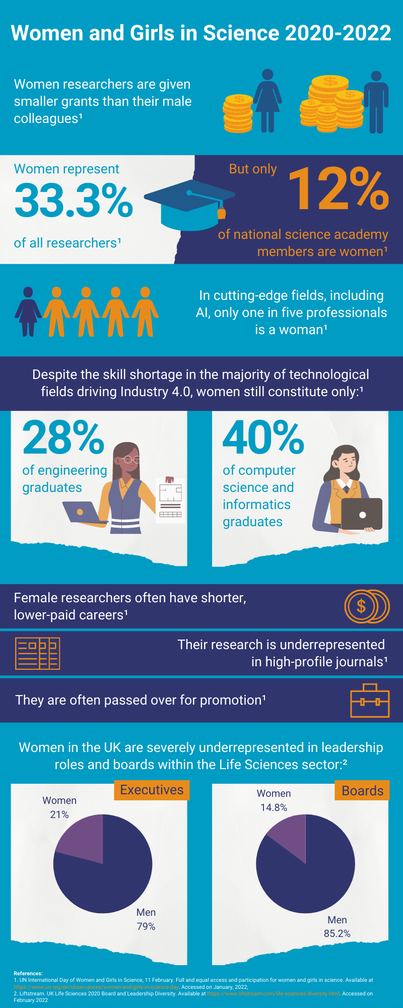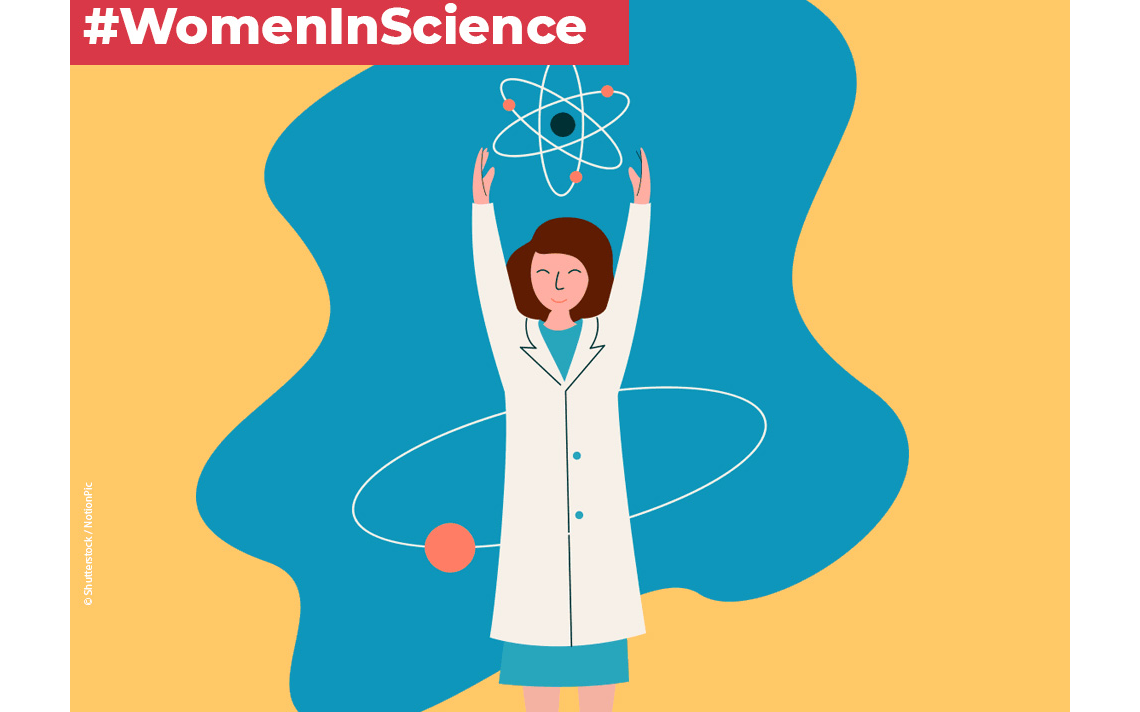In 2015, the United Nations (UN) General Assembly declared February 11 the International Day of Women and Girls in Science.1 With science and gender equality both key international development goals, engaging women and girls in science has been an important area of focus worldwide in recent decades; however, as the infographic below demonstrates, there’s still a lot of work to be done.2,3

At AS&K, we value and celebrate the work done by our female team members who are an integral part of the company’s success – dedicated team players, incredible leaders and innovators, driving meaningful change in the healthcare community. In fact, like in many MedComms agencies,4 women make up the majority (72%) of our global team, and 54% of them are in managerial positions.
However, while these numbers look promising, we ask why we don’t see the same level of representation in research. What is it about MedComms that empowers women to get involved, and what learnings can be applied to other science sectors to reduce the gender gap? Last year, we asked our own colleagues at AS&K why they chose a career in MedComms instead of research – improved job security and the feeling of being more directly involved in bettering patients’ lives were two of the most common reasons. It was also noted that the lab environment is not always collaborative, and that constant grant applications can be exhausting.
A few other reasons for women leaving research have been identified in the wider scientific community. Surprisingly, some women believe that their skills can be better leveraged and their work can have more influence in scientific support roles (e.g. project management) instead of more hands-on scientific positions.5 Less surprisingly, 43% of female scientists in the US either give up science altogether or switch to a part-time contract when they become mothers (compared to only 23% of male scientists when they become fathers). Although this shows the general incompatibility between a STEM career and parenthood, it clearly affects women much more than men.6 As noted by Dr. Caroline O’Hare, STEM is a fast-moving field, where taking a break often halts your career progression, leading to an increasing gender imbalance when moving up the professional hierarchy.
While MedComms continue to provide opportunities for female scientists to thrive, there’s a pressing need to keep women in research, especially in more senior positions. This requires understanding and addressing the reasons why they leave, and working to break down barriers to their successful career progression and advancement to leadership roles. Some of the solutions identified so far include increasing flexibility of research jobs (part-time and remote working), rolling out training programs (including leadership training), building support networks, and improving maternity/paternity leaves.
As today is the International Day of Women and Girls in Science, established to secure equal and full access to science for women and girls across the globe and to empower their participation in it,2 we hope that you will join us in raising awareness of these important issues and advocating for gender equality in research and beyond – today and every other day of the year!
#WomenInScience
References
- UN General Assembly. Resolution adopted by the General Assembly on 22 December 2015. Available at https://www.un.org/en/ga/search/view_doc.asp?symbol=A/RES/70/212. Accessed February 2022.
- UN International Day of Women and Girls in Science, 11 February. Full and equal access and participation for women and girls in science. Available at https://www.un.org/en/observances/women-and-girls-in-science-day. Accessed January 2022.
- Liftstream. UK Life Sciences 2020 Board and Leadership Diversity. Available at https://www.liftstream.com/life-sciences-diversity.html. Accessed February 2022
- Paramount Recruitment. Healthcare Communications Salary & Insight Survey. Summary Report 2020. Available at https://pararecruit.com/storage/app/media/salary_surveys/Healthcare-Comms-Salary-and-Insight-Survey-Summary-Report-2020-UK-Paramount-Recruitment.pdf. Accessed February 2022.
- Pantel S. An Investigation into the Factors that Contribute to Women Leaving Scientific Roles for Support Roles. Available at https://dash.harvard.edu/handle/1/37367667. Accessed February 2022.
- Cech EA & Blair-Loy M. The changing career trajectories of new parents in STEM. PNAS, 2019. Available at https://www.pnas.org/content/116/10/4182. Accessed February 2022
